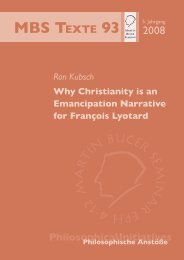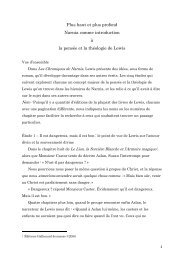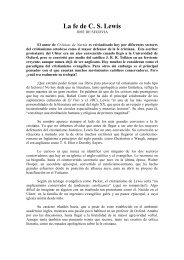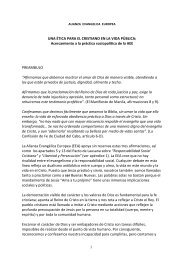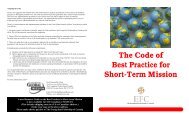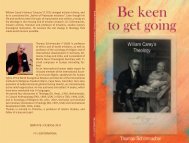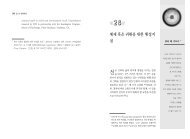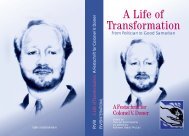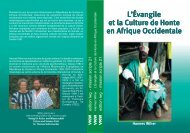WHEN YOU CROSS CULTURES - World Evangelical Alliance
WHEN YOU CROSS CULTURES - World Evangelical Alliance
WHEN YOU CROSS CULTURES - World Evangelical Alliance
Create successful ePaper yourself
Turn your PDF publications into a flip-book with our unique Google optimized e-Paper software.
THE GOSPEL MESSAGE AND CULTURE<br />
difference between universals and particulars, between primary truths and<br />
secondary truths. He should understand the differences between functions and<br />
forms, and their meaning. Most Christians, for example, believe in the<br />
importance of baptism, but they differ in their views on the mode of baptism.<br />
And churches have divided because of this one issue.<br />
Majoring on minor issues in cross-cultural work can impede the growth<br />
of the Gospel and the church. I have sadly observed Christian leaders entering<br />
into sharp disputes over issues related to the use or non-use of music during<br />
worship meetings, drinking from the same cup rather than using many cups<br />
for the Lord’s Supper, whether women should have their heads covered with a<br />
veil or not to have them covered, and other minor issues. The tragedy is that<br />
Christians majoring on such issues are unaware of the fact that such practices<br />
hinder the testimony and the mobility of the Gospel.<br />
CONTEXTUALISING BIBLICALLY<br />
In contextualisation, there is a theological dimension that needs to be<br />
looked into.<br />
D. A. Carson makes the remark that “broadly speaking, there are two<br />
brands of contextualisation. The first assigns control to the context: the operative<br />
term is praxis, which serves as a controlling grid to determine the meaning of<br />
Scripture. The second assigns the control to the Scripture, but cherishes the<br />
‘contextualisation’ rubric because it reminds us that the Bible must be thought<br />
about, translated into and preached in categories relevant to the particular<br />
cultural context”. 4<br />
Assigning “control to the Scripture” will provide a safeguard to error.<br />
The Willowbank Report describes various approaches to the interpreting<br />
of Scripture, distinguishing between traditional approaches and the contextual<br />
approach. Traditional approaches include the “popular” approach which simply<br />
reads and applies the Scriptures with no reference to the original cultural context<br />
of the writer. The weakness of this approach is that it ignores the original context<br />
of Scripture. Another traditional approach takes into account the context, but<br />
this “historical” approach ignores what the Scripture may be saying to the<br />
contemporary reader. It is also primarily academic and lacks application to the<br />
reader's own situation and cultural context.<br />
The “contextual approach” seeks to combine the positive elements of the<br />
traditional approaches. It also includes the cultural context of the contemporary<br />
reader.<br />
4 D.A. Carson, ed. (1987), The Church in the Bible and the <strong>World</strong>, <strong>World</strong> <strong>Evangelical</strong> Fellowship, page 220.<br />
25




